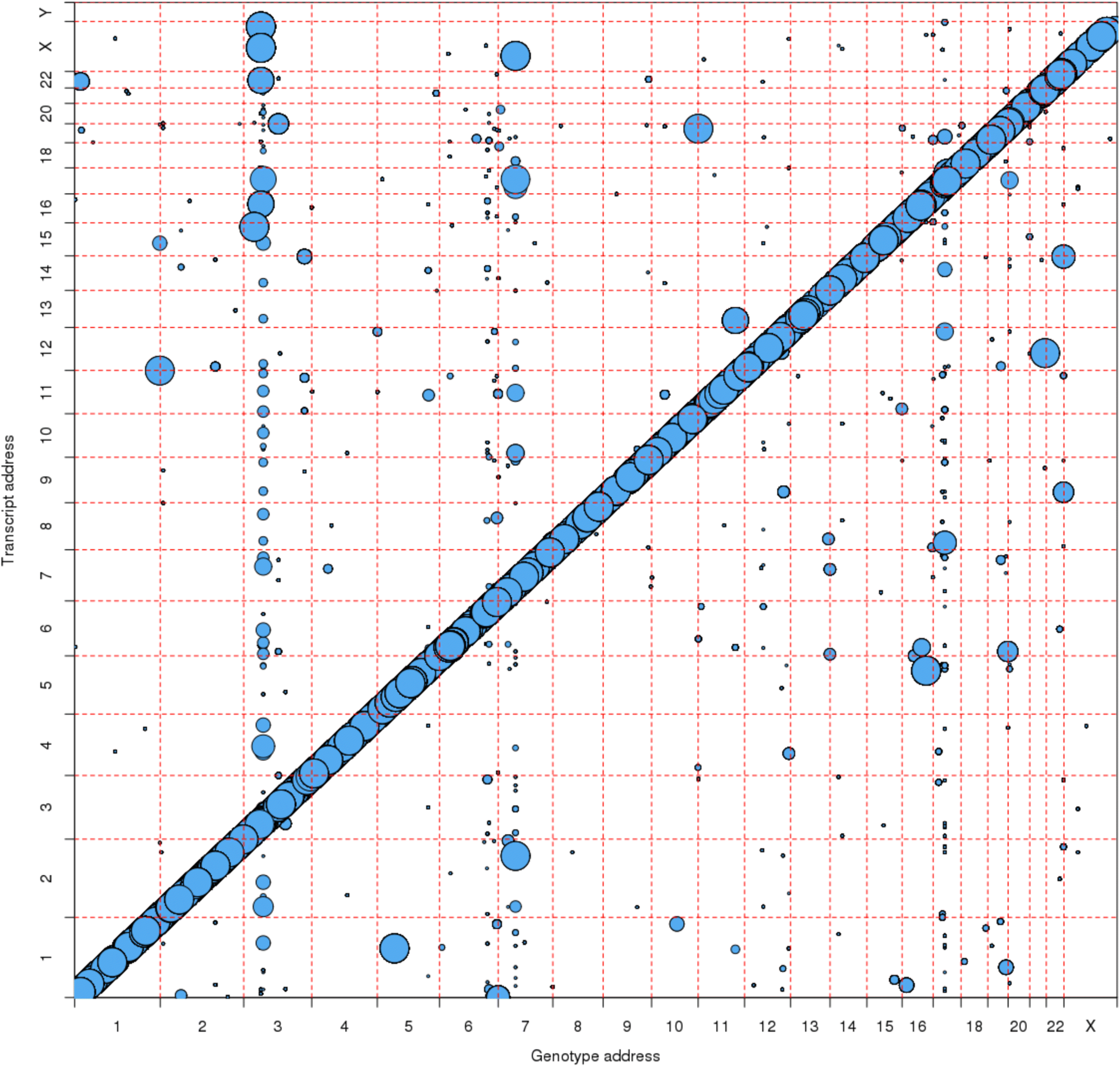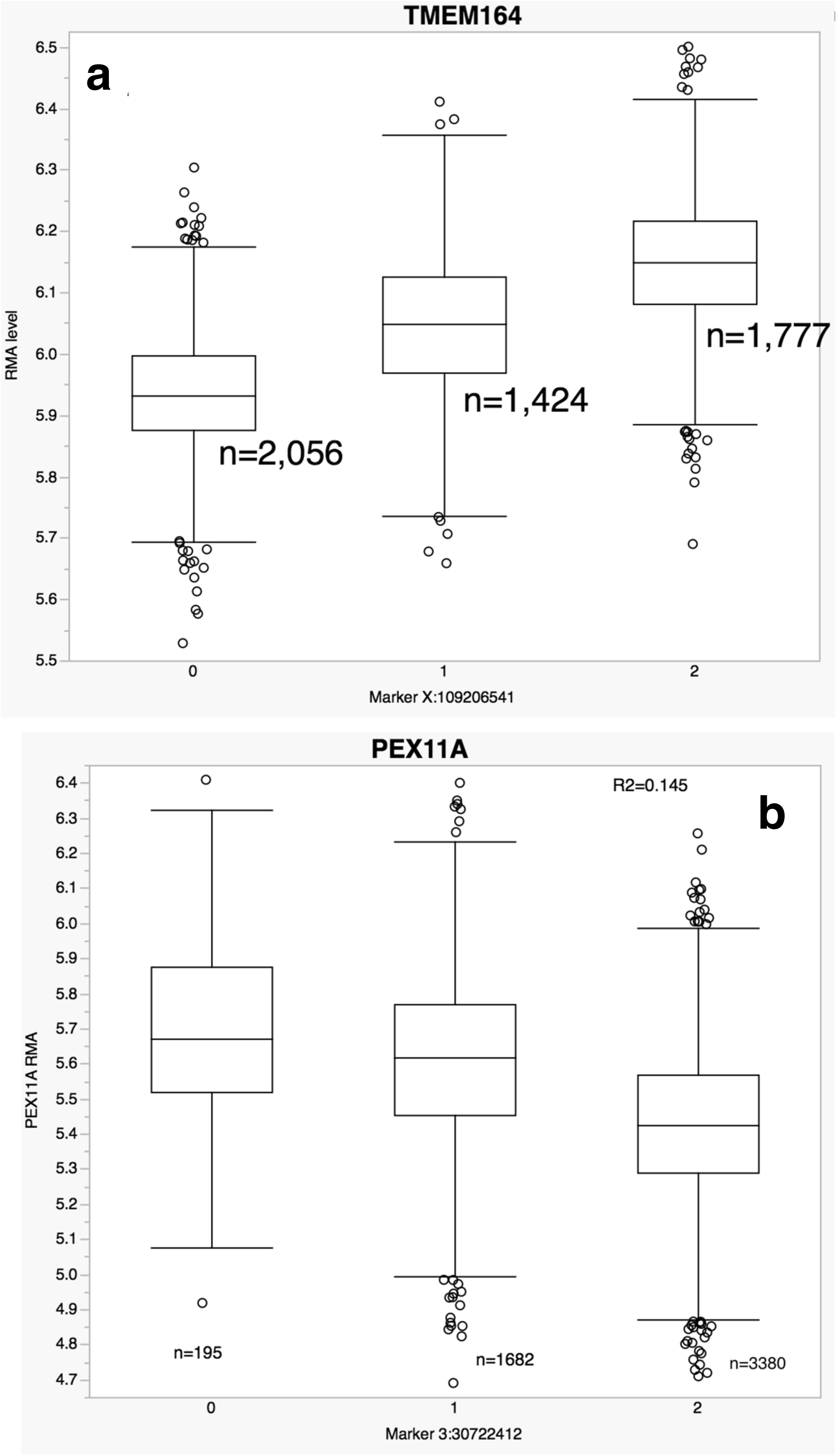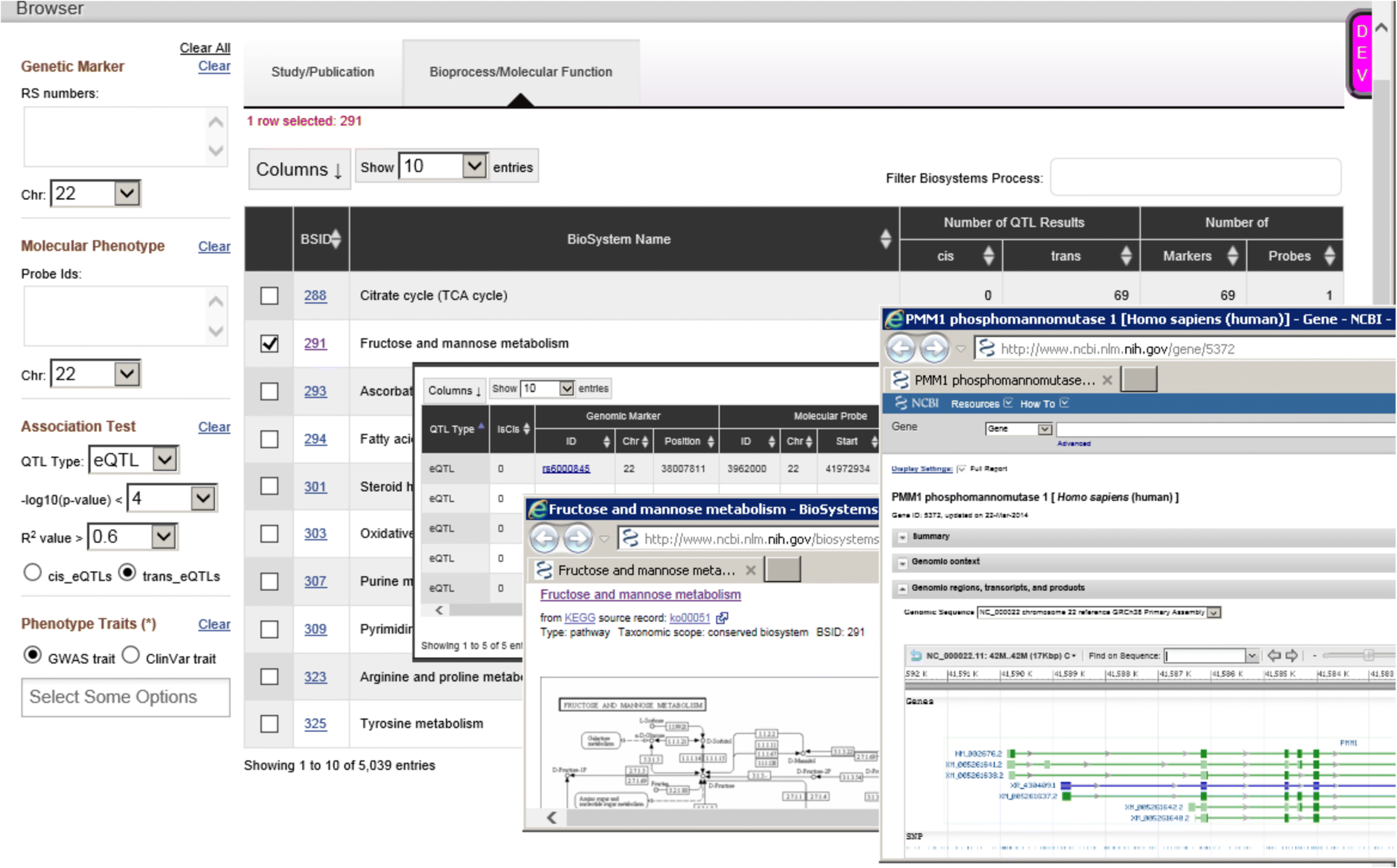Integrated genome-wide analysis of expression quantitative trait loci aids interpretation of genomic association studies
- PMID: 28122634
- PMCID: PMC5264466
- DOI: 10.1186/s13059-016-1142-6
Integrated genome-wide analysis of expression quantitative trait loci aids interpretation of genomic association studies
Abstract
Background: Identification of single nucleotide polymorphisms (SNPs) associated with gene expression levels, known as expression quantitative trait loci (eQTLs), may improve understanding of the functional role of phenotype-associated SNPs in genome-wide association studies (GWAS). The small sample sizes of some previous eQTL studies have limited their statistical power. We conducted an eQTL investigation of microarray-based gene and exon expression levels in whole blood in a cohort of 5257 individuals, exceeding the single cohort size of previous studies by more than a factor of 2.
Results: We detected over 19,000 independent lead cis-eQTLs and over 6000 independent lead trans-eQTLs, targeting over 10,000 gene targets (eGenes), with a false discovery rate (FDR) < 5%. Of previously published significant GWAS SNPs, 48% are identified to be significant eQTLs in our study. Some trans-eQTLs point toward novel mechanistic explanations for the association of the SNP with the GWAS-related phenotype. We also identify 59 distinct blocks or clusters of trans-eQTLs, each targeting the expression of sets of six to 229 distinct trans-eGenes. Ten of these sets of target genes are significantly enriched for microRNA targets (FDR < 5%). Many of these clusters are associated in GWAS with multiple phenotypes.
Conclusions: These findings provide insights into the molecular regulatory patterns involved in human physiology and pathophysiology. We illustrate the value of our eQTL database in the context of a recent GWAS meta-analysis of coronary artery disease and provide a list of targeted eGenes for 21 of 58 GWAS loci.
Figures




References
-
- Fehrmann RSN, Jansen RC, Veldink JH, Westra HJ, Arends D, Bonder MJ, et al. Trans-eQTLs reveal that independent genetic variants associated with a complex phenotype converge on intermediate genes, with a major role for the HLA. PLoS Genet. 2011;7:e1002197. doi: 10.1371/journal.pgen.1002197. - DOI - PMC - PubMed
Publication types
MeSH terms
Substances
Grants and funding
LinkOut - more resources
Full Text Sources
Other Literature Sources

